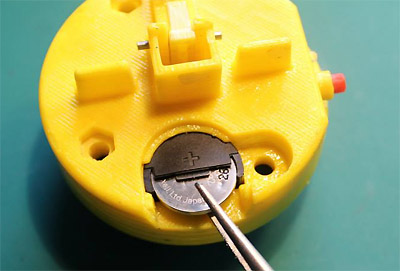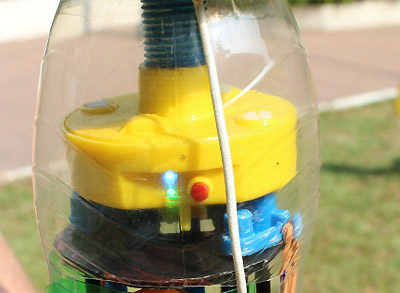| HidroMAX |
| Here is great and very versatile water rocket launcher
and parachute deployment mechanism
designed and built by James Gibbs & team. They are currently starting up a Kickstarter program to raise funds to mass produce the
launchers. If you are interested in contributing please
visit the
project on Facebook for latest updates.
The main websites are here:
http://www.hidromaxrocket.com/
and http://www.hidromax.com/
which will be updated soon. Please refer to the Facebook page
for the most recent updates.
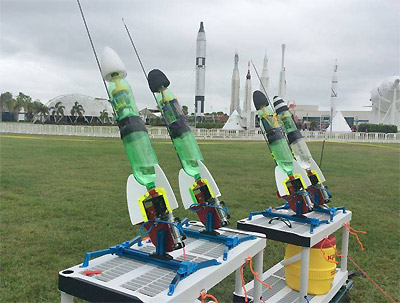
The HidroMAX Water Rocket Launching System
The HidroMAX Launch and Recovery System represents a new generation of water rocket launching with remote firing, a reliable tilt operated parachute system, an advanced nozzle mounted guide fin and safety systems.
This product is intended to be for both family fun and worthwhile science.
Features of the launcher include:
- Folding base
- Pneumatically controlled “AirRemote” firing system
- Variable nozzle diameter system from 512mm
-
Variable launch guide system suits bottle diameter 50100mm
- Easy fin attachment system (low down near center of pressure for increased stability.
- Adjustable launch trajectory
- Tilts to 90° for rocket loading
- Safety purge valve enables controlled launch aborts.
- Variable guide rod for launch accuracy
- Pressurized system lock prevents
accidental launch while system is
pressurized (requires system purge to reset)
- Check valve prevents rocket fuel
entering the pneumatic system.
- Removable splash deflector
- Uses high quality pneumatic and stainless steel fittings
|
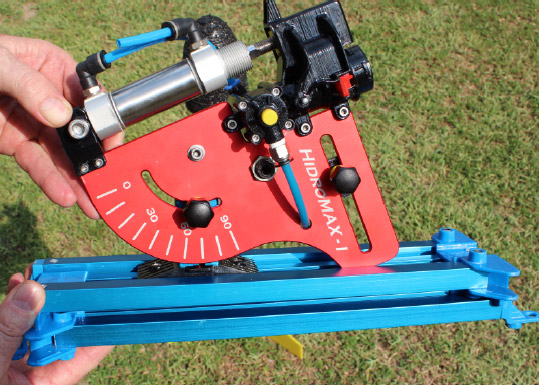 |
The Launcher Body
The launch pad permits the launch head
assembly to be rotated up to an angle of 90 degrees.
This rotation makes it possible to:
- Vary the launch trajectory to be
adjusted to compensate for different wind conditions
- To permit the launcher to be used to
fire rockets at a low trajectory in
situations where accuracy over
distance is accuracy, perhaps in rocket competitions.
-
To prevent water loss whilst loading the rocket onto the launcher the entire launcher
assembly is rotated 90 degrees.
Also included in the launcher body is the variable launch guide rod that accommodates different
rocket diameters.
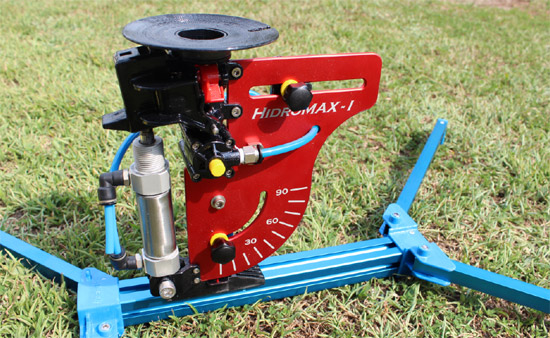
| Variable Nozzle and Fin Attachment system
Until now, most water rockets have been limited to fixed nozzle
diameters or even just use the open end of the bottle as the nozzle.
This significantly limits the potential for experimentation with rocket performance.
The HidroMAX Launcher has a system of interchangeable nozzle
diameters
from 5 12mm that permits awesome science as well as providing impressive flights.
Here rocketeers can adjust fuel (water) loads, air pressure, bottle size
and nozzle diameter and then observe the changes in performance and flight characteristics. As a unique feature of the HidroMAX system, the fins are attached directly to the nozzle.
This has several benefits:
● Low attachment point for flight stability
● Different fin shapes can be experimented with that can be attached quickly and reliably
● No glue or tape is required for fin attachment
● Safety release in case of impact with person, building or dog.
|
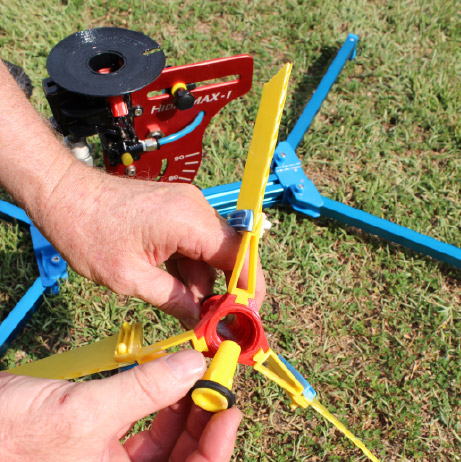 |
The TiltMAX Parachute Rescue System
The TiltMAX recovery system is based on the trajectory angle
of the rocket. As the angle of flight moves beyond 60° to
vertical, a (non-mercury) tilt
sensor activates the release trigger for the parachute. A
lightweight, secure mounting system makes the whole assembly
easy to mount in a rocket irrespective of bottle diameter.
|






